Palm Beach
Sarah Kaye & Co.
Palm Beach Buyers Agent
Table of Contents
Palm Beach Suburb Profile
Introduction
Palm Beach is one of Sydney’s most breathtaking and prestigious coastal enclaves, perched at the northern tip of the Northern Beaches. Surrounded by the Pacific Ocean on one side and the calm waters of Pittwater on the other, “Palmy” (as locals call it) offers a unique blend of luxurious tranquility and natural beauty. Located about 41 km north of the CBD (a scenic 60–90 minute drive), it feels a world away from city bustle – a place of golden sands, emerald headlands, and laid-back exclusivity.
As your trusted Northern Beaches Buyers Agent, we’re delighted to share our expert insights into Palm Beach in this suburb profile.
This comprehensive profile draws on deep local insight to explore Palm Beach’s lifestyle, history, demographics, amenities, and the Palm Beach property market in 2024–2025. Whether you’re a family, upsizer, downsizer, investor, or holiday home Palm Beach property buyer, you’ll discover why this suburb is so sought-after – and how a trusted Palm Beach buyers agent can help you navigate off-market opportunities and secure your dream home.
Lifestyle and Community Vibe
Palm Beach’s lifestyle is defined by relaxed luxury and coastal charm. By day, locals and visitors enjoy swimming, surfing, stand-up paddleboarding, and boating in a setting of unparalleled beauty. The suburb’s main ocean beach stretches along a pristine 2.3 km shoreline, with surf breaks popular among experienced surfers at the northern end near Barrenjoey Headland, and gentler waves towards the southern flags. On the western side, Pittwater’s calm bays like Snapperman Beach provide spots for kayaking, sailing, and family picnics by the water.
Life here moves at a slower pace – you’ll see morning walkers with coffee in hand, fishermen casting lines off the jetty, and maybe a TV crew filming scenes for Home and Away (Palm Beach famously doubles as “Summer Bay” on the long-running show). In the evenings, the vibe remains low-key and elegant. Residents might gather at a local bar or dine at a waterfront restaurant, but there’s no raucous nightlife – just the sound of the ocean and the balmy breeze through the palms.
Despite its high-profile status, Palm Beach retains a close-knit community feel, especially outside the busy summer season. Many homeowners are long-time residents who greet each other at the small group of local shops or at weekend community events. A monthly Palm Beach market at Governor Phillip Park brings together locals for fresh produce, crafts, and gourmet food stalls, fostering a friendly village atmosphere.
The local surf life saving club (founded in 1921) is a focal point of community activity – from nippers (junior lifeguards) training on Sunday mornings to the annual Palm Beach Surf Club events, there’s a strong spirit of camaraderie and volunteerism. Neighbours in Palm Beach take pride in their suburb’s beauty and tranquility; there’s a shared understanding that they are stewards of a very special place. For any Palm Beach property buyer, the lifestyle on offer is one of sun-drenched relaxation, outdoor recreation, and a touch of glamour, all wrapped in a genuinely welcoming community vibe.
History
Palm Beach’s rich history underpins its character as a secluded retreat. The area was originally home to the Garigal Aboriginal people, who knew this land for its abundance of fish and wildlife. Palm Beach’s name derives from the cabbage tree palms abundant in the area, which the Indigenous inhabitants used for weaving fishing lines and shelter roof. European settlement began in the early 19th century – in 1816, the land comprising Palm Beach (along with neighbouring Whale Beach) was granted to James Napper. For decades, this distant peninsula remained isolated; early European activity was limited to a fishing community at Snapperman Beach and a customs outpost to curb smuggling through Broken Bay.
Early access was challenging – visitors took a long series of trams and “a bus” to Newport, then a ferry across Pittwater to reach Palm Beach, as author Nancy Phelan recounted of the 1920s. This relative isolation only enhanced Palm Beach’s allure as “seven miles from Sydney and a thousand miles from care” (to borrow the old Manly ferry slogan). Affluent families built weekender cottages and grand estates here, some of which have been passed down through generations. Notably, Palm Beach Surf Life Saving Club was established in 1921, reflecting the growing popularity of surf bathing and the community’s commitment to safety.
Post-World War II, the suburb gradually saw more permanent residents as roads improved (a paved Barrenjoey Road finally provided a direct land route). Yet even as Palm Beach became more accessible, it never lost its secluded ambience. By the late 20th century, the suburb had cemented its reputation as the summer playground of Australia’s rich and famous – media tycoon Kerry Packer and other notable figures maintained homes here, and the soap opera Home and Away brought global recognition by filming at Palm Beach since 1988. In 2018 a feature film entitled “Palm Beach” showcased the area’s scenery to audiences worldwide.
Through it all, the heritage of Palm Beach has been carefully preserved: Barrenjoey Lighthouse and keeper’s cottages (heritage-listed and unchanged in their original stone finish) watch over the headland, and natural reserves like Hordern Park and McKay Reserve protect pockets of the original bushland and palms. In short, Palm Beach’s history is one of privacy, prestige, and preservation, evolving from an isolated fishing haven to one of Australia’s most coveted coastal communities.
Demographics
Palm Beach today is an intimate, affluent community of roughly 1,700 residents (2021 census). It is one of the wealthiest enclaves in the country – in fact, postcode 2108 (covering Palm Beach) was reported as the nation’s highest-income postcode in recent ATO data.
The population is skewed toward older adults: the median age is around 60, with a large proportion of residents being retirees or empty-nesters. Many are successful business owners or professionals who have transitioned from city life to enjoy the beachside tranquility. Households in Palm Beach are primarily couples without children, although there is a mix of long-established families as well. The community’s small size and prestige means people often know their neighbors (perhaps from seeing them at the beach or local café) and there’s a mutual appreciation for maintaining the area’s peace and beauty.
Home ownership is very high in Palm Beach – over 75% of dwellings are owner-occupied (and in practice, an even higher share are owner-held, given many homes are kept as family holiday houses rather than rental investments). Only about 10% of residents rent their homes, contributing to stable, long-term residency.
t’s common for properties to be held within families for decades. This stability and low turnover foster a strong sense of community identity but also mean new neighbors are a rarity. Culturally, the suburb is homogeneous, with the majority of residents born in Australia or other English-speaking countries. Given the price point of entry, socio-economically it is an elite demographic – high education levels, high incomes, and often a lifetime of accomplishments behind the semi-retired lifestyle. Yet Palm Beach locals are notably down-to-earth about their paradise; they tend to value privacy and understated living over ostentation. For a newcomer or Palm Beach property buyer, expect a welcoming but quiet community vibe – one where conversations might revolve around the surf conditions or the bush regeneration project on the dunes, rather than the hustle of city life.
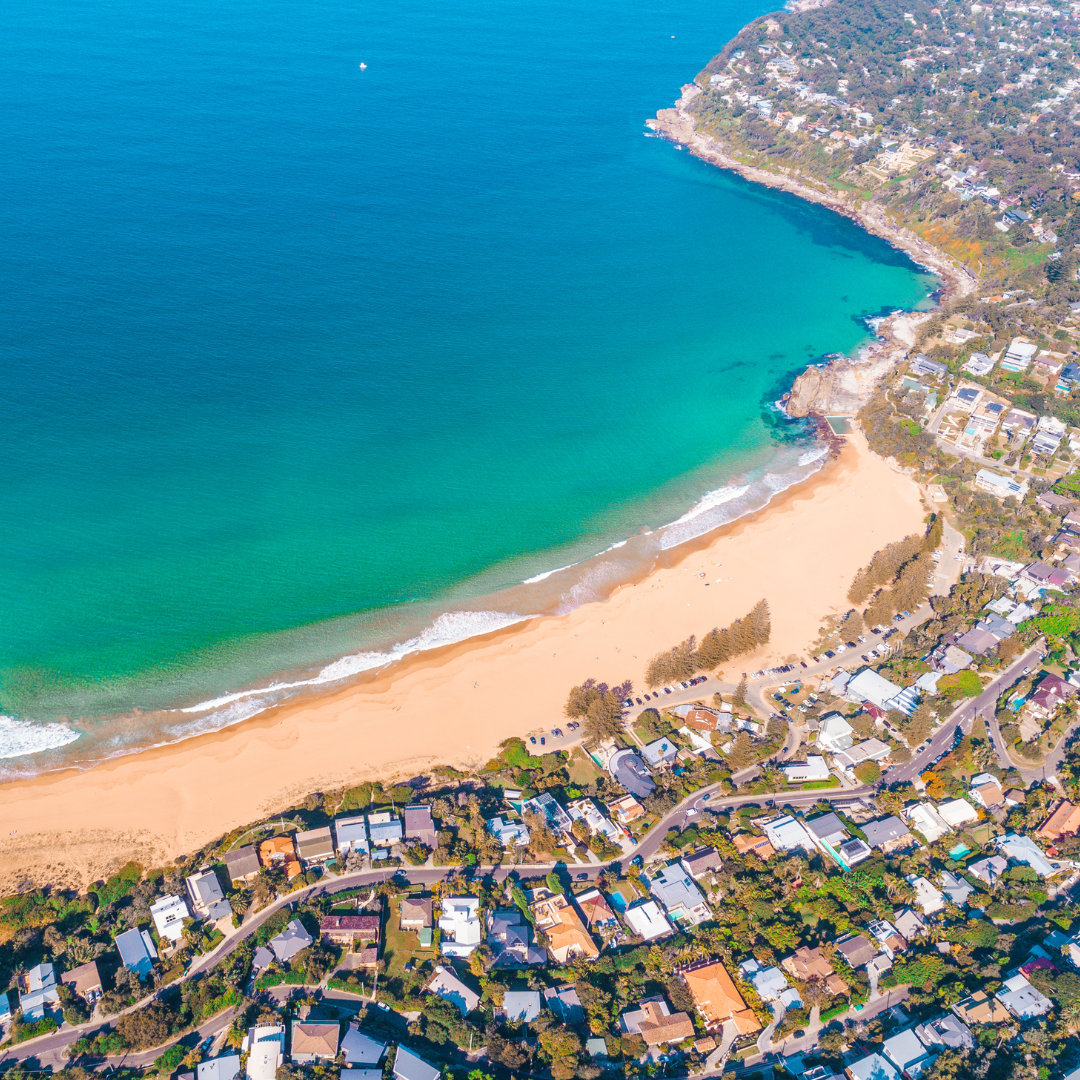

Palm Beach Amenities and Attractions
Considering its small size, Palm Beach boasts an array of amenities and attractions that epitomise coastal luxury and leisure. The centrepiece is, of course, the beach and natural environment – few suburbs can rival the panoramic vista from Barrenjoey Headland, where the historic Barrenjoey Lighthouse (a must-visit attraction) offers a 360° view over the ocean, Pittwater, and Kur-ring-gai Chase National Park. The lighthouse walk is a popular activity for both locals and tourists, rewarding the 20-minute uphill trek with stunning scenery and a dose of history.
At the base of the headland, Governor Phillip Park provides picnic areas, playground equipment, and access to the Palm Beach Golf Club – a picturesque 9-hole course where golfers play between the ocean and the bay (with views to Lion Island) and then unwind at the clubhouse restaurant. Playing a round at Palm Beach Golf Club is as much a social outing as a sport, and the club often hosts community events and casual dining nights that everyone can enjoy.
For everyday conveniences, Palm Beach has a handful of boutique shops, a local deli, and a small general store – enough for basics and gourmet treats, but for major shopping trips residents typically drive 10 minutes to Avalon Village, which offers supermarkets, pharmacies, and more extensive retail. However, what Palm Beach lacks in commercial hubs, it makes up for in world-class eateries and experiences.
One iconic venue is the heritage-listed Barrenjoey House: a stylish restaurant and boutique guesthouse that has been welcoming visitors since 1923. Under its white-painted rafters and vine-covered balconies, Barrenjoey House serves up fine seafood and modern Australian cuisine; it’s the perfect spot for a celebratory dinner or weekend lunch, radiating Palm Beach’s signature laid-back elegance.
Recreation options are abundant for such a serene place. Water sports are part of daily life – you can hire stand-up paddleboards or kayaks at Pittwater, join the local sailing club for weekly races, or take the historic ferry from Palm Beach Wharf to explore the beautiful Basin campground or Ettalong on the Central Coast. Nature enthusiasts enjoy coastal walks (the Bible Garden, a quiet, terraced garden with ocean views, is a little-known oasis), and there are several lookouts and walking tracks around the headland and Snapper Point.
For those seeking wellness activities, outdoor yoga classes sometimes meet on the beach at sunrise, and there’s a day spa tucked away for massages and beauty treatments. While Palm Beach doesn’t have the range of amenities a larger suburb might, it delivers quality over quantity: virtually every local attraction – be it a meal, a round of golf, a hike or a swim – comes with a jaw-dropping backdrop or a sense of exclusivity. It’s this blend of natural splendour and upscale amenity that underpins the suburb’s immense appeal (and indeed contributes to the premium values in the Palm Beach property market).

Palm Beach Schools and Education
As a small, mostly residential peninsula, Palm Beach itself has limited educational facilities – there are no public K-12 schools within the suburb’s borders. This quiet beach community was traditionally a holiday haven rather than a family-oriented town, but families who do reside here still have access to excellent schools in the surrounding area. Palm Beach property buyers with children should note that the nearest primary school is Avalon Public School, located about 8 km south in Avalon Beach. Avalon Public is a well-regarded government school (currently one of the largest on the Northern Beaches) known for its strong community involvement and academics. There is also Maria Regina Catholic Primary School in Avalon for those seeking a private primary education in a faith-based setting. Both are an easy drive or school bus ride down Barrenjoey Road.
For secondary schooling, local teens attend Barrenjoey High School in Avalon, which caters for Years 7–12. Barrenjoey High is a comprehensive public high school that enjoys a picturesque location near North Avalon – it offers a solid curriculum and benefits from a relatively small student population and close community ties (the school is integral to the peninsula’s community, with events and arts programs that involve residents). Some families in Palm Beach opt for private high schools further afield, such as those in Sydney’s North Shore or the city, often utilizing private bus services or car pools given the distance. It’s not uncommon for older students to commute to schools like Knox Grammar, Barker College, or Pymble Ladies’ College, reflecting the demographic’s ability to invest in education.
For younger children, Palm Beach does have the Palm Beach Kindergarten, a long-running community preschool (often called “Palm Beach Kindy”) that provides early childhood education in a lovely setting. This preschool, along with a few family daycare options, serves local families before kids graduate to “big school.” Additionally, nearby Avalon and Newport offer childcare centers and early learning centers for working parents or those seeking programs for toddlers.
In summary, while Palm Beach doesn’t have schools on every corner, families here manage with a short commute to neighboring suburbs for schooling. The safe, close-knit environment of Palm Beach itself is an idyllic place for children to grow up, spending afternoons at the beach or in nature.
Many parents feel that the slightly longer school runs are a worthwhile trade-off for the extraordinary lifestyle their kids enjoy at home. And with many residents working flexible hours or from home, carpooling and community arrangements make logistics easier. Education-wise, Palm Beach gives you the best of both worlds: a serene home base, with access to some of Sydney’s finest schools just a bit down the road.
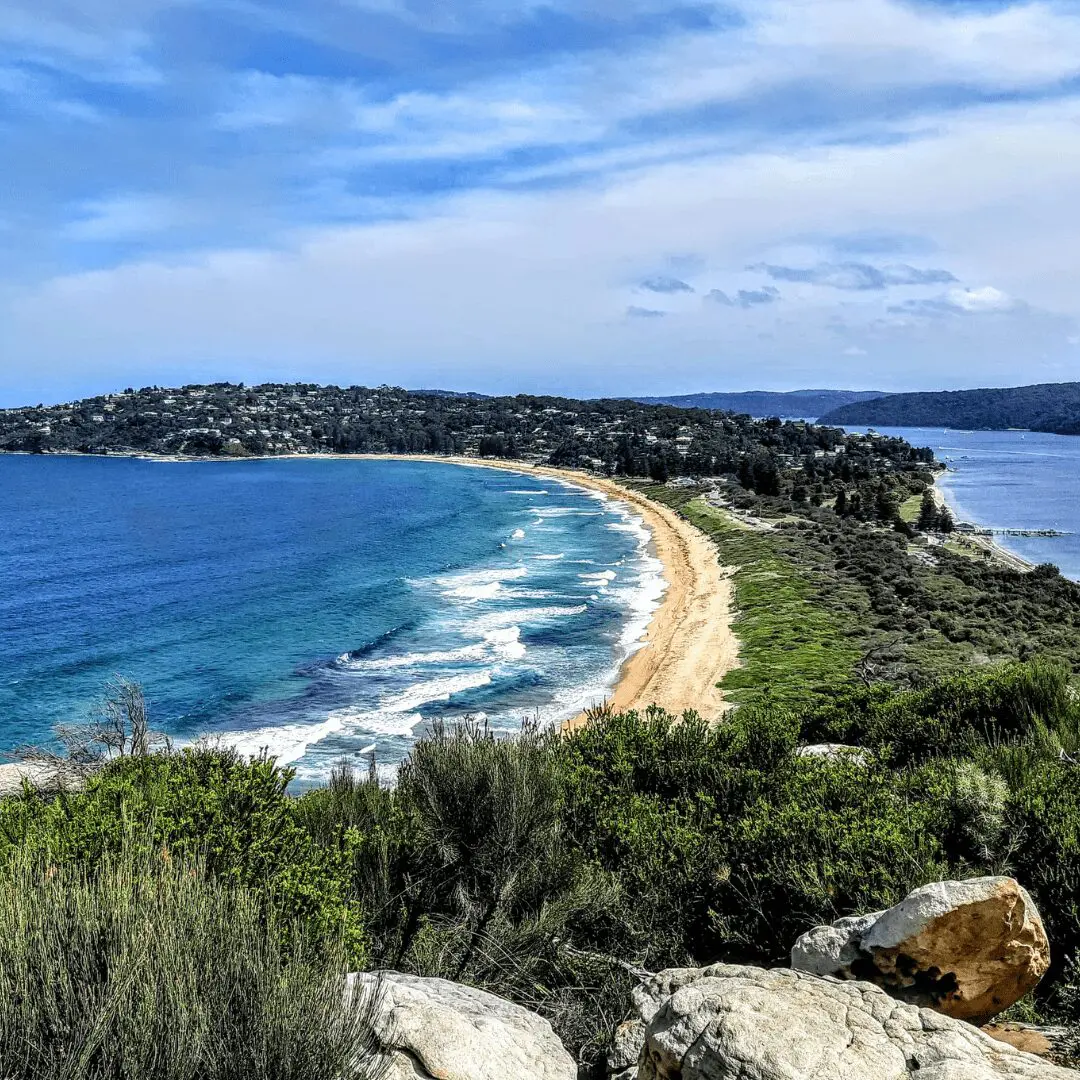
Palm Beach Transport and Connectivity
Secluded yet reachable, Palm Beach presents an interesting mix of transport considerations. The suburb sits at the very end of a peninsula, so there’s essentially one way in and out: Barrenjoey Road, which runs the length of the Northern Beaches. This geography means Palm Beach feels delightfully removed, but it also means getting to the Sydney CBD or other parts of the city requires a commitment.
By car, the journey from Palm Beach to downtown Sydney typically takes around 60–80 minutes in free-flowing traffic. In peak hour, it can extend beyond 90 minutes due to congestion along Pittwater Road and the Spit Bridge approaches. Most residents own cars (often multiple, to accommodate family and guests) and accept that a trip to the city or even the major shopping centres is a bit of a trek. The payoff is when they return home, driving that last stretch of Barrenjoey Road flanked by water on both sides, it truly feels like entering a sanctuary.
Public transport options exist, though they are relatively limited. There is no train service to Palm Beach – the closest train station is many suburbs away at Gordon or Mona Vale (for B-Line buses). Instead, Transport NSW provides bus services. The 199 bus route runs from Palm Beach through Avalon, Newport, and down the beaches to Manly, which connects to the Manly ferry and other bus lines. In peak times, express buses (E88/E89) operate from nearby Avalon or Newport directly to the CBD, so some commuters in Palm Beach drive or take the bus to Avalon and then hop on an express bus. However, there is currently no direct Palm Beach-to-City bus for the entire route, meaning a transfer is needed, and a one-way public transit commute to Wynyard can exceed 1.5 hours.
Because of this, relatively few Palm Beach residents do a daily city commute – those who work in the city often keep a pied-à-terre in town during the week, or they embrace flexible work arrangements. The rise of remote work has actually made Palm Beach more viable for professionals, since working from home with a fibre internet connection and an ocean view is quite appealing!
For local connectivity, the bus system is sufficient to reach neighbouring beaches, schools, and shops. Kids in Palm Beach often catch a school bus to Avalon or Newport in the mornings. There is also a community shuttle and taxi services, but ride-sharing (Uber/Ola) availability can be sparse given the distance – you might wait a bit for a driver to come up from Dee Why or Mona Vale. Many residents thus rely on their own vehicles or even golf carts for short local trips. Cycling is enjoyed recreationally (particularly up to the lighthouse or along quiet Whale Beach Road), but Barrenjoey Road itself can be narrow and busy for biking.
One unique transport feature of Palm Beach is its ferry and seaplane services. From Palm Beach Wharf on Pittwater, a regular ferry service runs to the Central Coast (Ettalong Beach and Wagstaffe), as well as a scenic loop to Great Mackerel Beach and the Basin campground in Kur-ring-gai Chase National Park. While not used for daily commuting to Sydney, these ferries are a cherished part of Palm Beach life, whether it’s a day trip for lunch on the Central Coast or a quick hop to a private boats-only community across the water.
In summer months, special ferries and even whale-watching cruises depart from Palm Beach. For those with means, seaplanes offer the ultimate connection: Sydney Seaplanes operates flights from Rose Bay that land on Pittwater, turning a two-hour drive into a 20-minute flight. It’s not an everyday thing, but it does highlight how Palm Beach caters to a lifestyle where time is valuable and experiences are paramount.
All told, transport in Palm Beach can be summarised as: “you can get there from here, but you might not want to leave.” The relative distance and limited transit options are a trade-off for the suburb’s exceptional privacy and beauty. Most locals are perfectly content staying within the “Palm Beach bubble” for most of their needs, and when they do venture out, they plan around the travel. In return, they enjoy virtually no through-traffic (only those coming to Palm Beach end up here) and the kind of peace that’s increasingly rare in a city as big as Sydney.
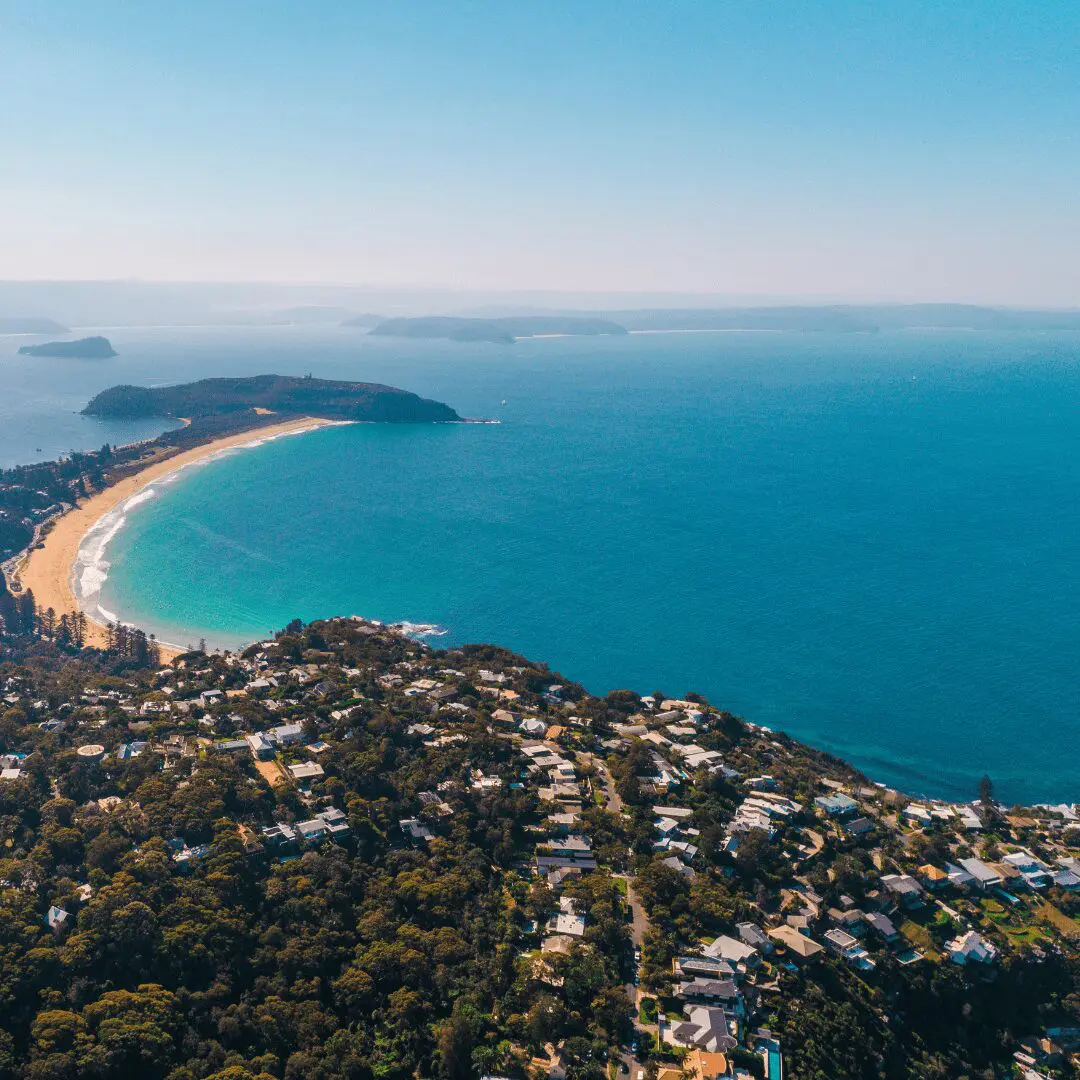
Palm Beach Property Market Overview
Current Prices and Recent Trends
The Palm Beach property market is renowned for its high-end house prices and tightly held stock. As of late 2024, the median house price in Palm Beach sits around $5.3 million, reflecting a strong surge over the preceding year. In fact, prices rebounded roughly 18%year-on-year – up from a median of about $4.45 million in late 2023 to $5.28 million in late 2024. This jump follows a brief dip during 2022–23 when Sydney’s market cooled; at that time, Palm Beach medians had pulled back from earlier peaks (for context, the median house price was about $5.65M in 2021 at the height of the pandemic boom.
The recent growth has almost reclaimed Palm Beach’s record highs, demonstrating the resilience of this exclusive market. It’s worth noting that with so few sales in Palm Beach each year, medians can fluctuate – typically only 30–35 houses trade annually (31 house sales were recorded in 2024). Each sale can heavily influence statistics, especially if an ultra-premium waterfront estate changes hands for $10M+ (which does happen). Over the long term, however, the trajectory is undeniably upward. In the past five years, Palm Beach has achieved well over 50% cumulative capital growth, outpacing many Sydney regions and solidifying its blue-chip status.
Apartments comprise a small market segment here, and definitive values are more complex to generalise. There are only a handful of unit complexes in Palm Beach, mostly clustered near the southern end or overlooking Pittwater, and some years see literally zero unit sales (for example, only 3 units sold in the entire 12 months up to early 2025. Given this low turnover, the “median unit price” is not a very useful indicator – it can swing drastically or be statistically unreliable. Broadly, one-bedroom units have been selling in the high $1 million (e.g. a 1-bedroom apartment fetched $1.4M in late 2024, while larger 2-3 bedroom apartments or those with spectacular views can achieve $2–3 million or more.
Units in Palm Beach tend to be boutique and often older style (some 60s–70s brick walk-ups ripe for renovation, as well as a few modern luxury apartments). They attract downsizers and weekender buyers who want a lock-and-go option in this location. Houses, however, remain the primary focus: Palm Beach houses range from quaint original cottages on the hillside to bold contemporary architect-designed homes and grand estates with private jetties. Entry-level houses (often inland side or requiring renovation) might start in the $3–4 million range, while trophy homes on the beachfront or with substantial waterfront land routinely command $8–12 million+, and the most exceptional estates have been known to transact off-market well beyond that.
The rental market in Palm Beach is quite niche. With the majority of homes owner-occupied or used as holiday retreats, only a small fraction are available for rent, and many of those are short-term holiday rentals rather than long-term leases. As of late 2024, the median weekly rent for houses was about $1,600 per week (having risen from roughly $1,350 a year earlier as rental demand picked up post-COVID). That level equates to a gross rental yield of only around 1.5–2%, given the high property values, indicating that investors here are typically more interested in capital growth and lifestyle usage than yield. (For comparison, a $5 million house renting for $1,600/week yields about 1.67%. Units rent for around $700–$800 per week on average (e.g. a one-bed unit might be $750/week), which can translate to a slightly higher yield ~2.5–3%, but still modest.
It’s telling that just ~10% of Palm Beach’s housing is rented permanently– there isn’t a large resident tenant pool, and many landlords opt for lucrative holiday letting during the peak summer months instead. Properties for rent can sometimes sit vacant in winter, yet command very high nightly rates in December/January from vacationers. Days on market for sales in Palm Beach are a bit longer than inner-city benchmarks, reflecting the unique buyer profile – houses average around 80–90 days on market (nearly 3 months) in recent years, whereas more suburban Sydney markets might be under 40 days. This is not due to lack of interest, but rather the matching process of finding the right high-net-worth buyer can take time for such bespoke properties. Overall, the current market is characterised by low supply and persistent buyer interest, with well-priced homes (especially those with prime positions) still attracting competitive offers despite broader economic headwinds.
Market Drivers and Buyer Demand
What drives the Palm Beach property market is a classic case of limited supply meets enduring demand. The suburb’s physical geography and planning controls impose a hard cap on how many properties exist – Palm Beach covers only about 2.6 km² of land, much of which is taken up by reserves or steep terrain, and local zoning prevents any high-density development.
There are no new subdivisions or estates; essentially, every house sits on its own piece of paradise, and if you want one, you must wait for an existing owner to sell. This rarity factor means buyer demand far outstrips the available homes, especially for certain categories (for instance, absolute beachfront homes – only a couple dozen even exist). Scarcity is the backbone of value here. Even during market lulls, Palm Beach doesn’t experience the large price corrections that more oversupplied areas might – owners are typically not forced to sell, and many would rather hold through a downturn than accept a bargain price for a location so impossible to replace.
The buyer pool for Palm Beach is diverse in background but uniformly affluent. A large portion of demand comes from Sydney’s wealthy professionals and business figures looking for a weekender or second home – essentially the modern equivalent of the Palm Beach tradition as a holiday escape. These buyers may live and work in the Eastern Suburbs or North Shore during the week, but crave a sanctuary for weekends and holidays where family can gather and recharge by the sea.
Another key segment is downsizers and empty-nesters: couples who raised their families in suburbs like Mosman, Vaucluse, or Wahroonga, and upon retirement decide to sell their city home (often at a handsome price) and invest in a dream residence by the beach. For them, Palm Beach offers a peaceful community, natural beauty, and a feeling of being on perpetual vacation, which is very attractive for the golden years. Some upsizers move within the Northern Beaches – for example, someone living in Manly or Collaroy who has done well and wants to move “up the peninsula” for more space and privacy; they might choose Palm Beach to acquire a larger home with a big view, accepting the longer commute as part of the lifestyle shift.
Interestingly, Palm Beach also sees interest from interstate and international buyers more than many Sydney suburbs do. The area’s fame (helped by media and its reputation as a celebrity haunt) means wealthy individuals from Melbourne, Brisbane or overseas (especially expats returning from London or Hong Kong) have Palm Beach on their radar for prestige property.
Some high-profile transactions have involved buyers from the USA, Europe, and China, though the market is not dominated by foreign buyers – they’re just one part of the mix. Investors in the traditional sense (buy-to-let investors) are relatively few because rental returns are low; however, some buyers do treat Palm Beach property as an investment in lifestyle and capital growth combined. A savvy investor might buy a Palm Beach house to use occasionally and holiday-let it for income in peak periods, banking on long-term appreciation.
The motivations of buyers here often go beyond numbers. Many are drawn by an emotional attachment – perhaps they vacationed here in childhood, or have friends in the area, or simply dream of boasting a Palm Beach address. The consistent thread is that Palm Beach property buyers are typically purchasing for the long term. It’s not a transient speculative market. This long-term confidence is a driver in itself: knowing that most owners are in it for decades creates a virtuous cycle of stability and desirability.
In terms of lifestyle drivers, Palm Beach offers something almost no other Sydney suburb can: the feeling of a remote island-like paradise, yet still under two hours from the Sydney Opera House. It’s this blend of convenience and seclusion that continues to attract buyers across all categories.
A factor that cannot be overlooked is the “prestige halo” of Palm Beach. Owning property here is as much about status as it is about enjoyment. It’s akin to having a piece of the South of France or the Hamptons, but within Sydney. This prestige means the market is somewhat insulated – many Palm Beach buyers are price-insensitive. If they find the right home, they’re willing to pay top dollar (and often outbid competitors) because there might not be another chance for years.
Additionally, many buyers are cashed-up (having sold businesses, received inheritances, etc.), so interest rate fluctuations or lending tightness affect them less. All these drivers – scarcity, emotional appeal, broad affluent buyer base – combine to keep demand high and values resilient in Palm Beach.
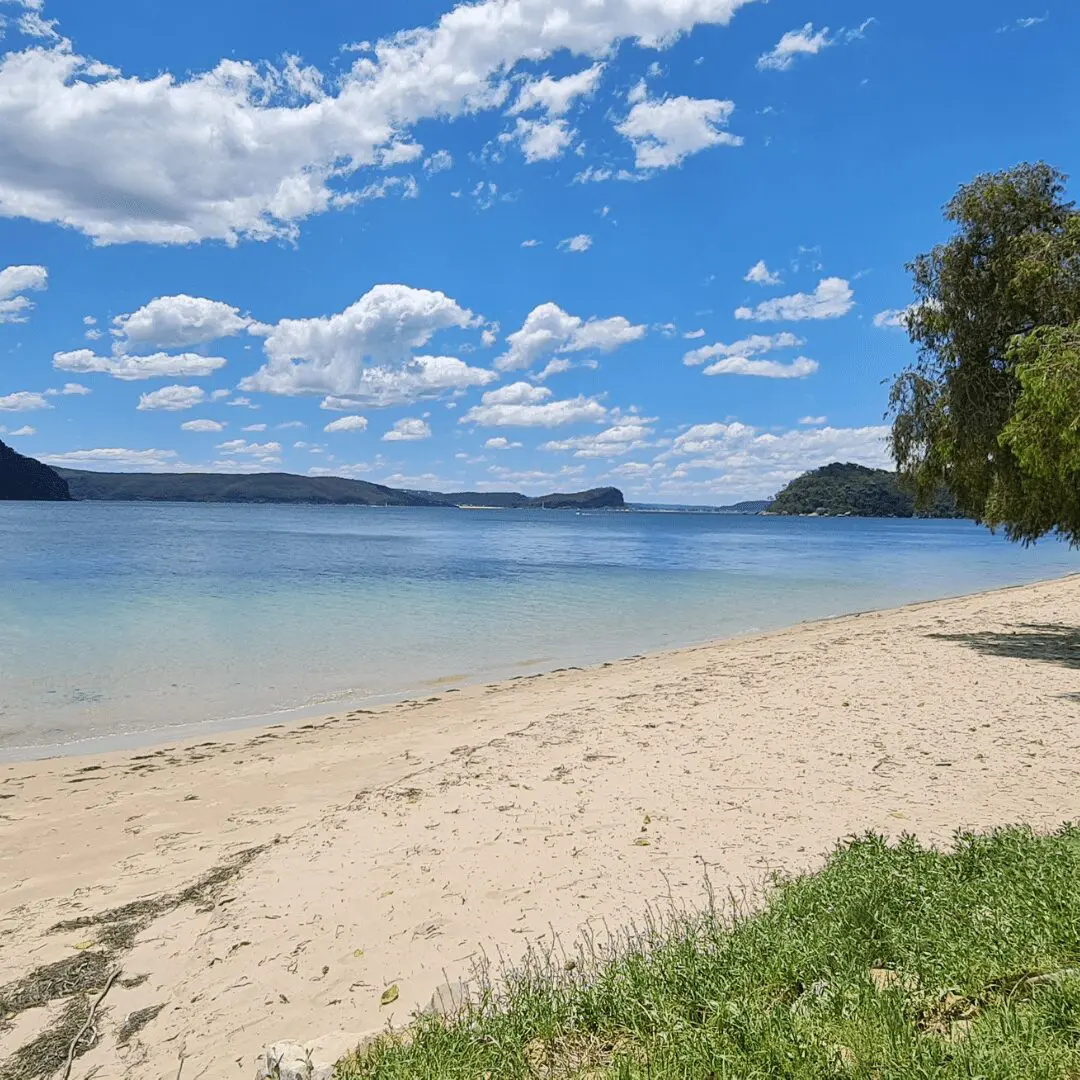
Palm Beach Market Outlook
Looking Ahead
Looking ahead, the outlook for Palm Beach remains strongly positive, underpinned by those robust fundamentals of limited supply and everlasting appeal. While the broader Sydney market in 2024–2025 faces headwinds like higher interest rates and economic uncertainty, Palm Beach’s ultra-premium segment often moves somewhat independently of general market cycles.
The pool of potential buyers may be smaller in absolute terms, but those who desire this location usually have the financial capacity to act, even when borrowing is expensive – some will purchase with cash or low LVR loans. Thus, we expect price growth to be steady over the next few years. Perhaps not as frenzied as the 2021 boom, but sustained by genuine demand. Industry experts predict Palm Beach will continue to attract new high-net-worth individuals, especially as global travel normalises – international buyers and expats can once again visit and decide to secure their piece of Sydney paradise.
One trend likely to benefit Palm Beach is the normalisation of remote and hybrid work. The pandemic taught many companies and professionals that work can be done effectively outside the traditional office. This means more people are free to live where they truly want, rather than Monday-to-Friday near the office. Palm Beach stands to gain from this shift; we may see an uptick in permanent residency as successful younger professionals (40s and 50s age bracket) choose to make Palm Beach their primary home while perhaps commuting just one or two days a week. An increase in year-round population could encourage slightly more local amenities and services (e.g. maybe a small grocery expansion or more cafes opening on weekdays), which in turn enhances the appeal for future residents – a virtuous cycle that supports property values.
Another aspect of the future market is generational change. Some of the long-time owners (who might be in their 70s, 80s, or beyond) could begin to divest their Palm Beach holdings in the coming decade, leading to some very significant properties hitting the market that haven’t been sold in 30+ years. These sales will garner a lot of attention and likely fetch benchmark prices, potentially resetting values upwards, especially if multiple motivated buyers vie for them. Each high-profile sale (often off-market) tends to raise the bar for what other owners believe their property is worth. So, while overall volume will remain low, record-breaking sales will likely punctuate the coming years.
From an investment perspective, Palm Beach should remain a sound long-term bet. The Northern Beaches in general continue to benefit from infrastructure improvements – for instance, the B-Line rapid bus service (extending to Newport currently) and upgrades to Mona Vale Road have made access easier. There’s periodic discussion about further improving transport to the far northern end (though a ferry to the CBD or a rail line remains unlikely), but even incremental improvements in road capacity or bus frequency can slightly reduce the “friction” of living in Palm Beach.
However, none of those will fundamentally alter the exclusive nature of the suburb – if anything, they might broaden the buyer pool marginally. Environmental and zoning protections will ensure Palm Beach doesn’t get overbuilt; the community and council are very vigilant about preserving the landscape (for example, any new development applications are tightly scrutinised to maintain the area’s character). This means the secluded, low-density charm that is central to Palm Beach’s value proposition will endure into the future.
In summary, the future of Palm Beach looks much like its present: high demand, scant supply, and values that trend upward over time. Short-term market fluctuations may occur – e.g. if interest rates spike further or if there’s a temporary luxury market slowdown – but Palm Beach owners are generally insulated and patient, so fire sales are rare. Most likely, the suburb will continue to appreciate at a healthy pace. Buyers who manage to secure a home here tend to hold on, and newcomers will keep aspiring to join their ranks. For those contemplating purchasing in the area, the outlook suggests that buying sooner rather than later is prudent (as waiting for a “dip” might mean missing out altogether). And for current owners, the horizon is bright: their slice of paradise should only become more prized as Sydney grows and the tranquillity of places like Palm Beach becomes ever more unique.
Off-Market Opportunities in Palm Beach
In an exclusive market like Palm Beach, some of the best opportunities to buy never make it to the public eye. Off-market sales – transactions conducted without public advertising or listings – are a significant facet of the Palm Beach property scene. Privacy is a big deal here: many owners are high-profile individuals or long-time residents who value discretion and prefer a quiet sale process. It’s not uncommon for a homeowner to let a few local agents and contacts know that they’re open to selling, without putting up a signboard or online listing. As a result, a savvy Palm Beach property buyer cannot rely solely on real estate portals or auction announcements; by the time a property is on Domain or realestate.com.au, the truly eager buyers may have already been through it via private appointment.
The prevalence of off-market deals means that engaging with the right networks is crucial. This is where a Palm Beach buyers agent proves invaluable. Experienced local buyers’ agents often hear whispers of homes that might be available and can arrange a viewing long before (or if ever) the general public finds out. For example, a buyers agent might know that the owner of a classic beachfront cottage is considering downsizing, or that a family estate on the Pittwater side could be purchased quietly if the right offer is made. They leverage relationships with selling agents and the community to give their clients early or exclusive access. In a market as tight as Palm Beach, these off-market opportunities can represent the majority of what’s truly for sale at any given time. Some years, more properties change hands off-market than via advertised campaigns.
The benefits of off-market purchases are significant for buyers. First, there’s often less competition; you might be the only one at the negotiating table rather than one of 50 people at an auction. This can lead to a more straightforward negotiation and sometimes a better price (though in Palm Beach’s case, sellers are savvy too – they generally still expect a premium price reflective of their property’s uniqueness). Second, off-market dealings allow buyers and sellers to set their own pace and terms. Without the pressure of a public auction date, due diligence can be done more calmly, and terms like longer settlements or rent-back arrangements can be negotiated to suit both parties. For the buyer, it feels more like a private transaction, which, given the personal nature of acquiring a home, many appreciate.
However, unlocking off-market deals requires insider knowledge and trust. Sellers won’t invite just anyone into their home; they typically entertain off-market showings to vetted individuals who have demonstrated seriousness and financial capability. A reputable Palm Beach buyers agent can vouch for their client and get them through doors that would otherwise stay closed. They also often know the history of properties (perhaps it was quietly available a couple of years ago and didn’t sell, etc.) and can advise a buyer on how to approach an owner – sometimes a respectful letter of interest or a premium offer can prompt a dialogue where none existed.
Essentially, in Palm Beach, a buyers agent serves as your gateway to hidden inventory. It’s a strategy particularly embraced by determined buyers who have specific requirements (for example, “north of the golf course, east of Barrenjoey Road, with ocean views” – criteria that might only match a handful of houses). Rather than waiting indefinitely for one of those to be listed, a buyers agent will proactively seek out owners and present opportunities.
For those concerned about missing out on Palm Beach’s secret listings, the key takeaway is: be proactive and well-connected. Virtually every agency in the area has stories of properties sold with just a phone call to a known buyer. By aligning with professionals deeply embedded in the local market, you ensure you’re on that call list. In a suburb where opportunity knocks quietly, having someone at the door on your behalf makes all the difference.
Off-market does not mean off-limits – with the right guidance, it can be your ticket to securing the perfect Palm Beach home before anyone else even knows it’s available.
If you are considering a move to Palm Beach’s golden shores, then leverage the expertise of Sarah Kaye & Co., the premier Buyers Agent in Palm Beach. We know every view, street, and hidden gem in this exclusive enclave – from hillside retreats to beachfront estates. As your trusted Northern Beaches Buyers Agent, we’ll secure the right Palm Beach property, often before it’s publicly listed. Get in touch with Sarah Kaye & Co. today and make your Palm Beach property dream a reality, stress-free
BUILDING TRUST
Media Coverage
We are proud to have been featured in respected media outlets over the years. From interviews to thought leadership articles, our commitment to transparency, trust, and client success continues to be recognised in the community.
This reinforces why Sarah Kaye & Co. Buyers Agents is your trusted partner for buying property on the Northern Beaches and North Shore.





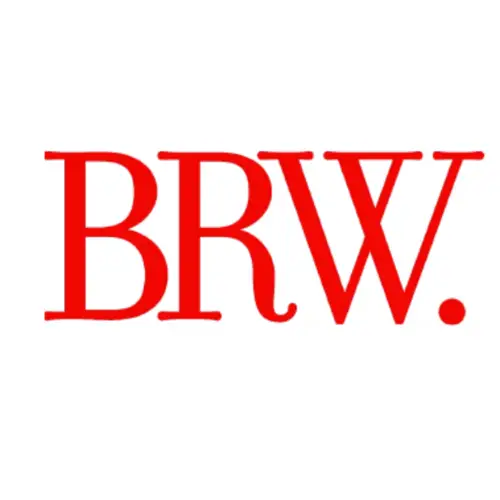
Our Property Buying Services
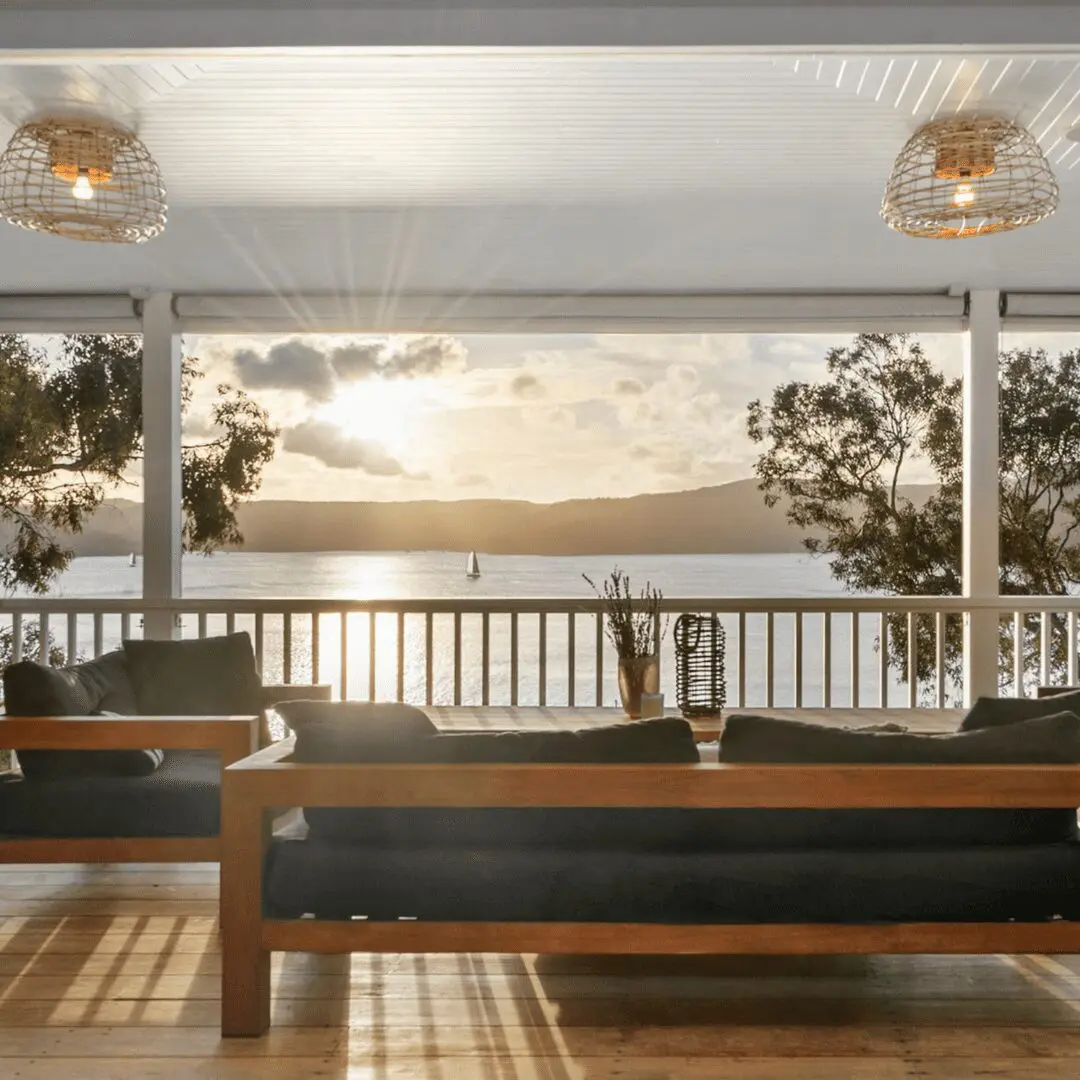
Full Service
Whether you’re time-poor or want expert guidance from start to finish, our Full Service option has you covered.

Appraise & Negotiate
Our Buyer’s Agent Appraisal and Negotiation Service is designed to provide homebuyers with trusted North Shore and Northern Beaches property buying support by offering expert appraisal and negotiation services.
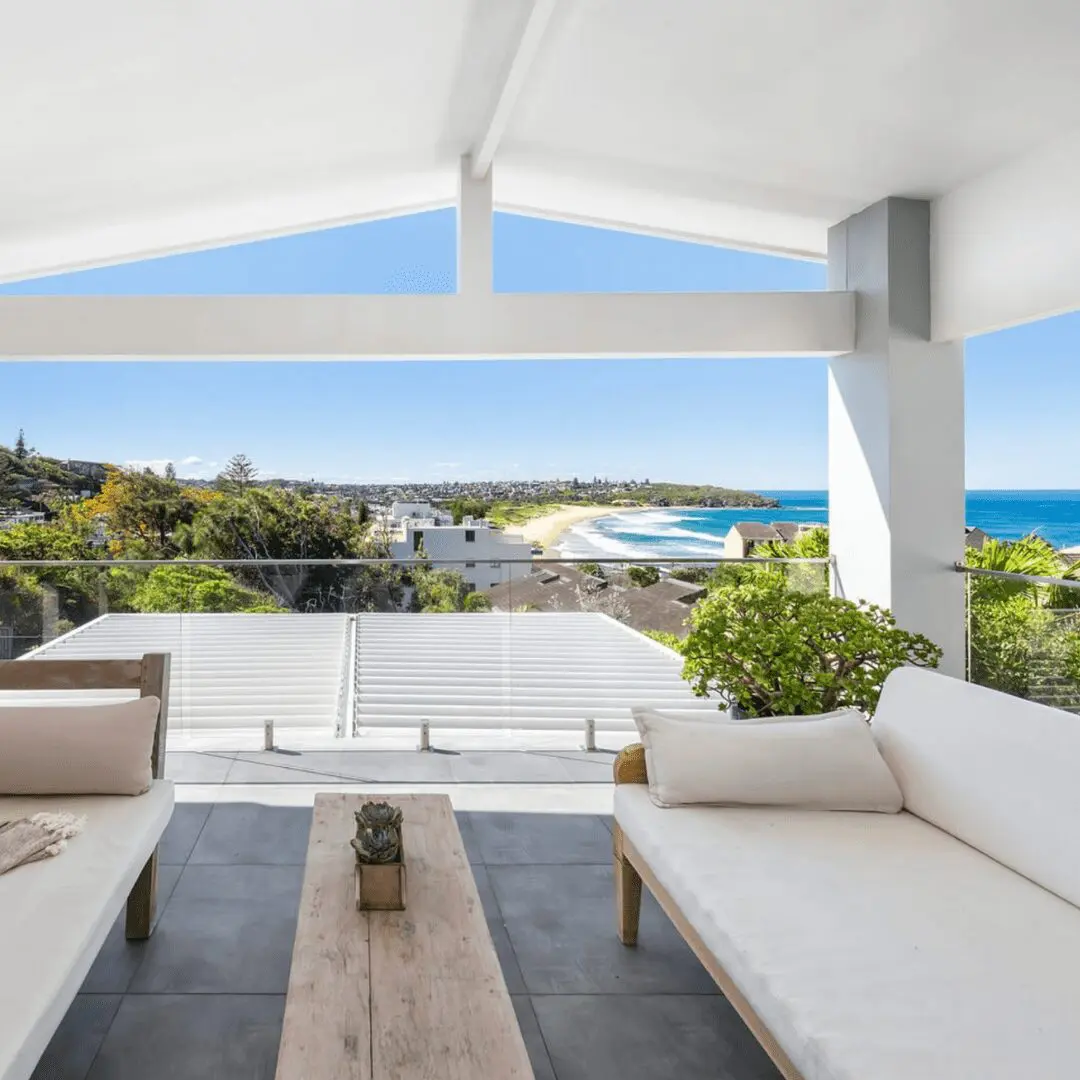
Auction Bidding
Avoid the stress and risks of auction day with our expert Auction Bidding service, where we act on your behalf to secure your property strategically, without overstepping your budget.

